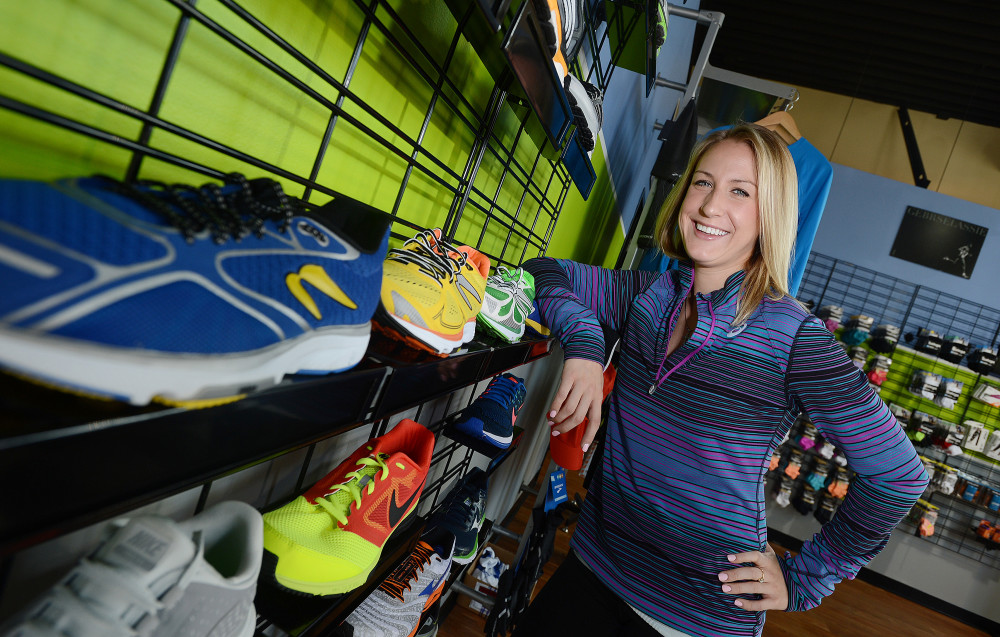By Jonathan Mcfadden
The Charlotte Observer.
CHARLOTTE, N.C.
From the sales floor of a Charlotte, N.C., baby store, Aimee Gallo recently gave her customers their first chance to touch and feel her products before buying them.
Gallo, owner of Web-based baby shoe retailer Friendly Rooster, set up a pop-up shop inside Gingersnap Baby, an infant accessory store at a shopping center.
For small retailers just getting started, the “store within a store” concept is a novel way to grow a business and draw attention from customers.
Though both Friendly Rooster and Gingersnap Baby cater to new parents and newborns, Gallo said there’s no worry about competing for profits or hijacking customers.
“Since they do not sell shoes, maybe only a few booties, it makes our companies more complementary than adversarial,” she said.
Such limited-time partnerships are not uncommon among retailers, especially as business owners tap into e-commerce and look to broaden the demographics of their clientele, said Laura Egeln, an associate business professor at Charlotte’s Johnson & Wales University.
Department stores historically, she said, have opened “stores within stores” to push name brand products. But now, smaller retailers are picking up on the trend.
“The department stores are specific to an older clientele typically,” she said. “In order to reach a different clientele, we have to do things more creative, especially with the online presence.”
The benefits: “The target market is already … in the store,” she said.
But partnerships can be tricky and might not be sensible for small retailers, said Dan Butler, vice president of communities integration at the National Retail Federation.
Retailers who lease out space, he said, can risk losing their share of sales and profits.
“For small independents, they’re giving up store space they could otherwise control or use,” he said. “It only makes sense … if they could make money themselves (or) double the amount of profit.”
NEGOTIATE THE DETAILS
Gingersnap Baby, a seller of infant accessories that opened in March, received up to 15 percent of the profits during the two days Friendly Rooster used its space, said Stephanie Byrley, Gingersnap Baby owner.
Byrley said she was eager to say yes when Gallo asked to use her store for the pop-up.
“We’re still trying to get our name out into the community,” Byrley said. “We’ve never done a pop-up before. We take every opportunity we can.”
Because Friendly Rooster sells Tip Toey Joey, a global brand of leather baby shoes, and also donates pairs to impoverished infants, Byrley felt the online retailer aligned with her store’s vision.
Gallo felt the same.
In July, she and Krysta Johnson, who manages Friendly Rooster’s social media and marketing, decided to launch a tour of pop-up shops that would start in Charlotte and travel across the country.
They looked for a store owner who had a “cool mission behind them,” Johnson said. By mid-September, they found Gingersnap Baby in a simple Google search for children’s shops in Charlotte.
Ironing out the details took three to four meetings, Byrley said, and a clear understanding about each business owner’s expectations.
“For us, Gingersnap had an eye towards the responsibility factors we look for in our brands,” Gallo said.
COMPLEMENT, NOT COMPETE
Not all retailers should think partnering is plausible.
Major retailers, such as Best Buy, can lease space to retailers responsible for managing their area, said Butler of the retail federation. That isn’t always the case for “small-store retailing.”
“Most small-business people don’t have enough space in their stores to consider that,” he said. “(They’re) better off selling licensed products and other things … to make the store more profitable. A big retailer typically isn’t going to go into a small retailer.
“It just isn’t profitable.”
Small retailers should be cautious about entering a partnership with another small-store owner.
Egeln, of Johnson & Wales, agrees: “You want to make sure both companies have a sense of financial stability so you’re not getting caught financially as well.”
Store owners, she said, should question whether the guest store’s colors, assortment, styling, quality level and price point complement the host.
“You don’t want it to cause more competition,” she said.
NEIGHBORS
The Charlotte Running Co. has no worries about competition. The running specialty shop recently opened its fourth location inside a bicycle store near a mall.
Kelly Jenco, who manages the location, helped broker the deal.
“It honestly looks like it was meant to be that way,” Jenco said.
The running shop pays rent and often shares customers with the bike business. There might be some product crossover, Jenco said, but not much.
“What we sell and what they sell is different. Our merchandise is very complementary,” she said. “(The bike business is) all mountain bikes and road bikes. … We’re run-specific. It’s not like we’re redundant.”














































































































































































































































































































































































